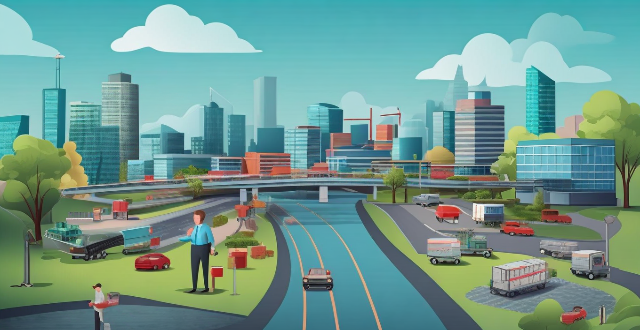The text discusses the importance of infrastructure and transportation systems for national development, highlighting their role in economic growth, improved living standards, and enhanced connectivity. It outlines strategies for developing these systems in low-income countries, including government intervention and policies such as public-private partnerships and financial incentives; international assistance from multilateral organizations, bilateral aid, and foreign direct investment; technology and innovation through smart grids, telecommunication networks, and sustainable construction methods; and capacity building through technical training, research and development, and public awareness campaigns. The conclusion emphasizes that a comprehensive approach addressing these areas is crucial for achieving sustainable development and improving citizens' lives.

How Can Low-Income Countries Develop Their Infrastructure and Improve Transportation Systems?
Importance of Infrastructure and Transportation Systems
*Infrastructure and transportation systems are crucial components for the development of a nation. They facilitate economic growth, improve living standards, and enhance connectivity within and between countries.*
Key Benefits:
- Economic Growth: Infrastructure projects create jobs, boost local economies, and attract foreign investment.
- Improved Living Standards: Reliable infrastructure ensures access to basic services like clean water, electricity, and healthcare.
- Enhanced Connectivity: Efficient transportation systems promote trade, tourism, and cultural exchange.
Strategies for Development
1. Government Intervention and Policies
*Governments play a vital role in shaping policies that encourage infrastructure development. This includes setting priorities, allocating funds, and creating an enabling environment for private sector involvement.*
##### Key Measures:
- Public-Private Partnerships (PPPs): Collaborate with private investors to share risks and resources.
- Regulatory Frameworks: Enact laws that protect investors and ensure fair competition.
- Financial Incentives: Offer tax breaks, subsidies, or low-interest loans to attract investors.
2. International Assistance and Cooperation
*Low-income countries often lack the financial resources needed for large-scale infrastructure projects. Seeking international assistance can bridge this gap.*
##### Potential Sources:
- Multilateral Organizations: World Bank, Asian Development Bank, etc.
- Bilateral Aid: Direct funding from developed countries or regional powers.
- Foreign Direct Investment (FDI): Encourage foreign companies to invest directly in local projects.
3. Technology and Innovation
*Adopting modern technologies can make infrastructure projects more efficient and cost-effective. Innovation also helps overcome geographical challenges unique to each country.*
##### Examples:
- Smart Grids: Improve energy distribution and reduce losses.
- Telecommunication Networks: Expand internet access using satellites or wireless technology.
- Sustainable Construction Methods: Use eco-friendly materials and designs that minimize environmental impact.
4. Capacity Building and Education
*Investing in education and training programs is essential for developing a skilled workforce capable of maintaining and operating complex infrastructure systems.*
##### Key Areas:
- Technical Training: Offer vocational courses in engineering, construction management, etc.
- Research and Development: Support universities and research institutions working on innovative solutions.
- Public Awareness Campaigns: Educate citizens about the importance of infrastructure maintenance and conservation.
Conclusion
*Developing infrastructure and transportation systems in low-income countries requires a multifaceted approach involving government action, international cooperation, technological innovation, and capacity building. By addressing these areas simultaneously, nations can achieve sustainable development and improve the lives of their citizens.*